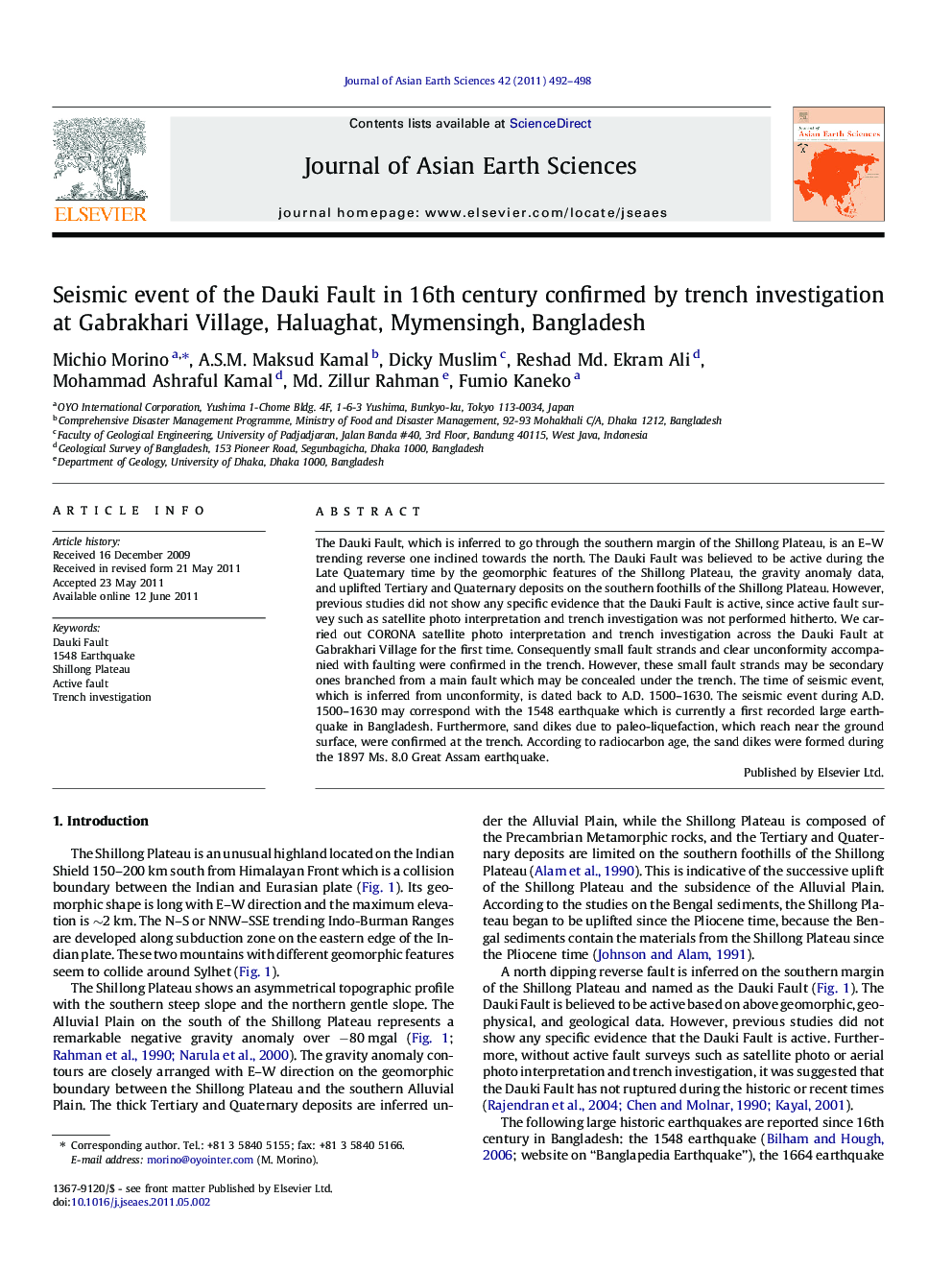| Article ID | Journal | Published Year | Pages | File Type |
|---|---|---|---|---|
| 4731872 | Journal of Asian Earth Sciences | 2011 | 7 Pages |
The Dauki Fault, which is inferred to go through the southern margin of the Shillong Plateau, is an E–W trending reverse one inclined towards the north. The Dauki Fault was believed to be active during the Late Quaternary time by the geomorphic features of the Shillong Plateau, the gravity anomaly data, and uplifted Tertiary and Quaternary deposits on the southern foothills of the Shillong Plateau. However, previous studies did not show any specific evidence that the Dauki Fault is active, since active fault survey such as satellite photo interpretation and trench investigation was not performed hitherto. We carried out CORONA satellite photo interpretation and trench investigation across the Dauki Fault at Gabrakhari Village for the first time. Consequently small fault strands and clear unconformity accompanied with faulting were confirmed in the trench. However, these small fault strands may be secondary ones branched from a main fault which may be concealed under the trench. The time of seismic event, which is inferred from unconformity, is dated back to A.D. 1500–1630. The seismic event during A.D. 1500–1630 may correspond with the 1548 earthquake which is currently a first recorded large earthquake in Bangladesh. Furthermore, sand dikes due to paleo-liquefaction, which reach near the ground surface, were confirmed at the trench. According to radiocarbon age, the sand dikes were formed during the 1897 Ms. 8.0 Great Assam earthquake.
► We conducted active fault survey on the southern margin of the Shillong Plateau. ► The Dauki Fault was first confirmed by trench investigation. ► The Dauki Fault has ruptured during 16th century. ► The seismic event may correspond with the 1548 earthquake.
